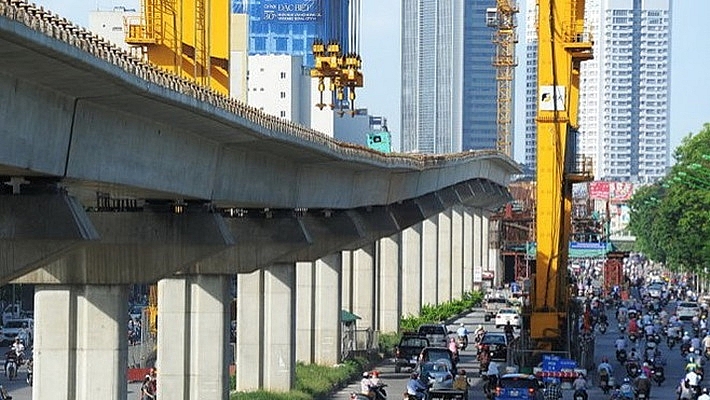Cat Linh-Hadong railway likely to miss launch date
 |
| Hanoi residents may not be able to try out the railway before the 2019 Lunar New Year |
Since the test run three months ago, Hadong district residents have been on pins and needles waiting for their first trip on the urban railway, which is expected to cut down travel time from the district to the city centre.
Dieu Linh, a resident from Hadong district, told VIR, “It takes me 45-60 minutes to reach my workplace, which is 14km from my home. Every day, I get stressed and wish I could use public transport instead of my motorbike. Urban railway will be the best option as it will bypass congestions.”
However, as the Metro line falls farther and farther behind schedule while investment capital mounts every year (currently $868.4 million), it is unlikely that that the project will be put into operation in the 2019 Lunar New Year.
Unknown progress
In the Ministry of Transport’s (MoT) adjustment proposal notice sent to the prime minister in June, the MoT proposed adjusting the project’s finishing time to 2020, the time to complete installing devices to August 2018, and the time to start test runs to September 2018.
However, over the past seven years, despite a test run carried out several months ago, the project developer – China-based China Railway Engineering Group No.6 Co., Ltd. – has only assembled about 90 per cent of the project’s devices.
“The test run will last for 3-6 months, and the time to put the railway into operation will depend on the results,” said a member of the Hanoi Metropolitan Railway Management Board.
On the other hand, with the goal of putting the project into operation in the 2019 Lunar New Year, since the test run on September 30, 2018, there are only slightly more than four months to complete and put the railway into operation.
Personnel fluctuation
Another big challenge of the project is the lack of personnel. Accordingly, 80 employees of Hanoi Railway One Member Limited, the project’s construction contractor, have left the company.
According to Hanoi Railway One Member Limited, 681 workers are employed along the Cat Linh-Hadong elevated railway, including 30 untrained labourers, 201 labourers trained in China, and 451 labourers trained in Vietnam. However, the labourers trained in Vietnam have only received theoretical training from Chinese experts and labourers trained in China.
Hanoi Urban Railway One Member Limited requested the Chinese developer to provide more practical trainings but failed, leaving both the companies and personnel hanging during the delay. Some of the personnel employed for the operation of the railway have quit over the long delays.
Vu Hong Truong, general director of Hanoi Urban Railway One Member Limited stated 12-15 per cent of the personnel have left. The percentage may keep increasing if the project sees more delays, and the offered wages are not enough to lure in personnel, who also do not receive allowances during the practical training and the test run.
What the stars mean:
★ Poor ★ ★ Promising ★★★ Good ★★★★ Very good ★★★★★ Exceptional
 Tag:
Tag:
Related Contents
Latest News
More News
- Vietnam’s green transition demands collective financial action (December 15, 2025 | 12:00)
- VIR workshop highlights capital and policy for sustainable development (December 15, 2025 | 11:00)
- National Assembly approves pilot mechanisms to accelerate major projects in Hanoi (December 12, 2025 | 11:29)
- Vietnam eases policy approval requirements, simplifies foreign and outbound investments (December 11, 2025 | 17:53)
- Unpacking new momentum in Vietnam’s M&A market (December 10, 2025 | 09:59)
- Forum honours outstanding M&A deals, strategies, and advisory firms (December 09, 2025 | 18:22)
- Vietnam enters defining phase of M&A growth (December 09, 2025 | 17:00)
- Vietnam’s M&A market opens new opportunities amid strong economic momentum (December 09, 2025 | 15:00)
- Vietnam M&A Forum 2025: new position, new momentum (December 09, 2025 | 14:30)
- FDI in Vietnam jumps on additional capital and share purchases (December 09, 2025 | 13:56)





























 Mobile Version
Mobile Version